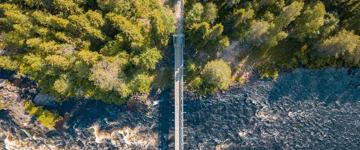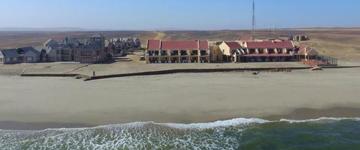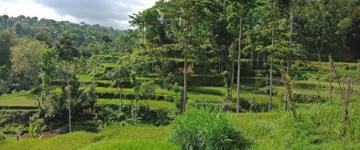St. Basil's Cathedral
St. Basil's was built to commemorate the capture of the Tatar stronghold of Kazan in 1552, which occured on the Feast of the Intercession of the Virgin. The cathedral was thus officially named Cathedral of the Intercession of the Virgin by the Moat (the moat being one that originally ran beside the Kremlin).
Saint Basil's is located at one end of Red Square, just across from the Spasskaya Tower of the Kremlin. Not particularly large, it consists of nine chapels built on a single foundation.
The riot of color and shapes that is St. Basil's Cathedral is unmatched anywhere else in the world. The French diplomat Marquis de Custine commented that it combined "the scales of a golden fish, the enamelled skin of a serpent, the changeful hues of the lizard, the glossy rose and azure of the pigeon's neck" and wondered at "the men who go to worship God in this box of confectionery work."
The powerfully eastern design of St. Basil's reflects both its location between Europe and Asia and its historical origins. Since the Kazan Qolsharif mosque had been the principal symbol of the Khanate captured by Ivan the Terrible, some elements from the mosque were incorporated into the cathedral to symbolize the victory.
Although the towers and domes appear chaotic, there is symmetry and symbolism in its design. There are eight domed chapels symbolizing the eight assaults on Kazan: four large and octagonal and four small and square. In the center is a tent-roofed spire topped with a small golden dome.
The ninth chapel on the east side added in 1588 for Basil's tomb interrupts the symmetery of design somewhat. It can be recognized on the outside by its green-and-gold dome studded with with golden pyramids.
The interior is a maze of galleries winding from chapel to chapel and level to level via narrow stairways and low arches. The walls are painted in floral and geometric patterns.
St. Basil the Blessed can be visited in his chapel on the lower floor, where he lies in a silver casket in gaudy splendor. Upstairs, the Chapel of the Intercession contains the equally splendid blue and gold iconostasis. Other chapels, such as that of St. Nicholas, are more restrained and even austere in their decor.
In a garden at the front of the cathedral stands a bronze statue commemorating Dmitry Pozharsky and Kuzma Minin, who rallied Russia's volunteer army against the Polish invaders during the Time of Troubles in the late 16th and early 17th centuries.
The statue was originally constructed in the center of Red Square, but the Soviet government felt it obstructed parades and moved the statue in front of the cathedral in 1936.



